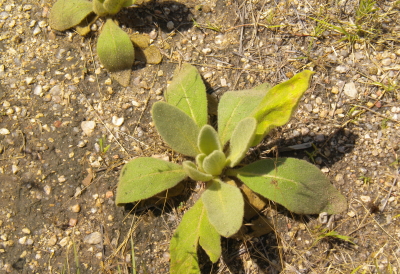Weed control timing depends on the type of noxious weeds you have on your pasture, native field, and meadow. Currently the problem noxious weeds in Douglas County are mainly perennials and biennials. Perennial weeds are weeds that live three years or longer. They form a taproot, flower, and set seed without dying. They may lose their foliage in winter and die back but they recover in spring. Biennial weeds require two years to develop and complete their life cycle. In the first year, they develop rosettes. In the second year, the plant bolts, flowers, produces seeds, and dies.
Bull Thistle, Common Mullein, Common Teasel, Cutleaf Teasel, Diffuse Knapweed, Mediterranean Sage, Musk Thistle, Houndstongue,  Plumeless Thistle, Redstem Filaree, Scotch Thistle.
Plumeless Thistle, Redstem Filaree, Scotch Thistle.
Canada Thistle, Common Tansy, Cypress Spurge, Dalmatian Toadflax, Field Bindweed, Hoary Cress, Leafy Spurge, Myrtle Spurge, Orange Hawkweed, Perennial Pepperweed, Sulfur Cinquefoil, Purple Loosestrife, Russian Knapweed, Russian Olive, Saltcedar, Spotted Knapweed.
Best weed control timing of established Biennial and Perennial Noxious Weeds is in fall, around September/October. In fall, plants stock their roots with sugars to survive the winter. The herbicide moves down into the plant’s underground system (roots, rhizomes, tubers) to kill the entire plant.
For general weed control in addition to noxious weed control spring is a better weed control timing. Timing varies from year to year depending on the snowmelt and the temperatures. Usually May through June is a good time when rapid growth takes place.
If you have noxious weeds on your land, give SprayTech a call for the best weed control timing. We have knowledge, equipment to take care of any size infestation. Submit estimate request and we will get back with you as soon as possible. Serving Castle Rock, Parker, Larkspur and Douglas County areas.
Comments are closed.